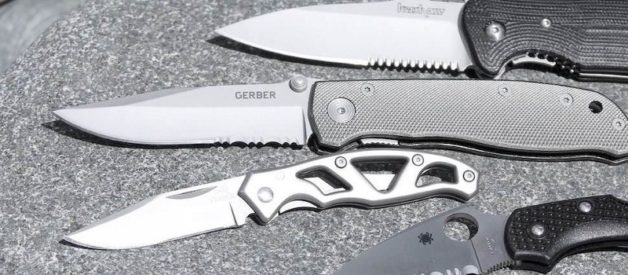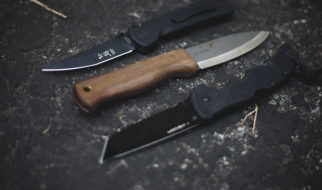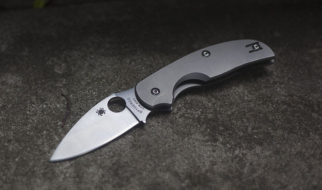Choosing an EDC knife can be a hard and sometimes overwhelming decision. There really is no right or wrong answer. We are all different and have different requirements for our tools, which makes selecting one mostly a matter of personal preference.
At its most basic, and EDC knife must be easy to carry day in and day out. It should be tough enough to tackle any task, ranging from the most ordinary to full on high-stress emergencies. It should also be versatile and allow you to both open your mail while at the same cut through a seat belt to save someone’s life.
As I said, many aspects of which everyday carry knife to select will be a personal preference. When coming to a decision, there are several factors I always think about and consider first. It’s a process that has worked well for me for many years. These are my recommendations on how to choose an EDC knife.
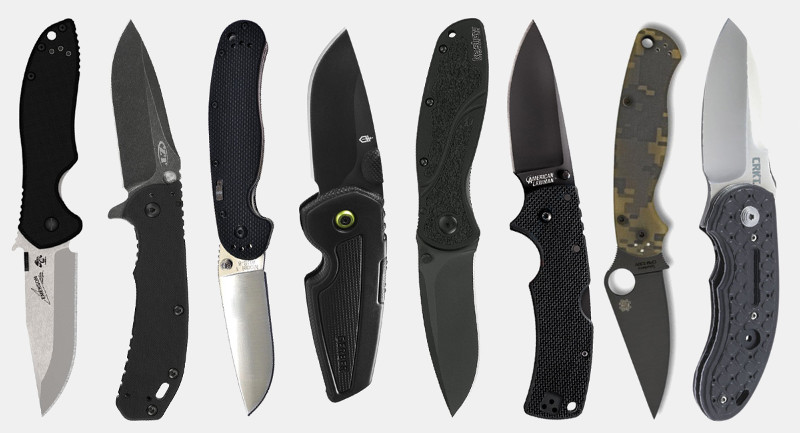
-
Purpose
This is by far the most important consideration. Ask yourself what you are planning to use your knife for and what do you expect it to do. Most top EDC knives are versatile enough to do just about anything. But, certain models will still be better suited for some things over others. Depending on your needs, a knife with a small serrated blade could, for example, suit you much better than one with a big straight edge blade.
Start off by thinking about how you will typically use your EDC. If you work in a warehouse, you may use it to cut open boxes. If you spend a lot of time on a farm, your knife could see daily use cutting thick ropes or opening bales of hay.
Once you have a good understanding of how you will be using your knife, you can then start focusing in on specific qualities, like blade type, the overall size, or the opening mechanism.
-
Local Laws
Laws related to carrying knives differ significantly between countries, states, and sometimes even municipalities. Just because a knife qualifies as an EDC knife by definition, it may not necessarily be legal to carry where you live.
The most common restriction is on the length of the blade. Knives with blades past a certain number of inches are usually a no go. Your state may also require you to get certain permits to carry your EDC knife legally. A good example of this would be a concealed weapon permit.
The bottom line is to be aware of any limitations imposed by the law. The last thing I would want for you is to spend a lot of time and money researching and buying your perfect knife, only to then find out it cannot legally leave your home. Or worse, carry it with you not realizing it’s illegal, and get into trouble with law enforcement.
-
Weight and Size
You will be carrying your knife with you all the time. After all, that’s the point of owning and EDC. Therefore, you want it to be reasonably light and small. There will always be a larger, heavier knife that may perform better, but that typically comes at the cost of practicality. An EDC is definitely about the latter.
How you intend on carrying your knife around, for example in your pocket vs. in a gear bag, will also influence the weight and size decision.
From owning many different knives over the years, I learned my preferred specs are a blade of around 3.5 in, a closed length of no more than 5 in and a weight of less than 4 oz. My current EDC knife of choice, the Spyderco Paramilitary 2, fits those criteria perfectly.
-
Blade Type
The sharp side of the blade, which is called an edge, can come either serrated or plain. A serrated edge will have grooves down its length. These grooves make slicing and cutting very easy. The downside of a serrated edge is that it is much harder to sharpen compared to a plain one.
Plain edges, on the other hand, are better for more accurate cuts. You can also find knives with partially serrated edges, giving you more options when the need arises. If you know what kind of cutting you will mostly do, the choice should be clear. If not, I recommend going with a plain edge.
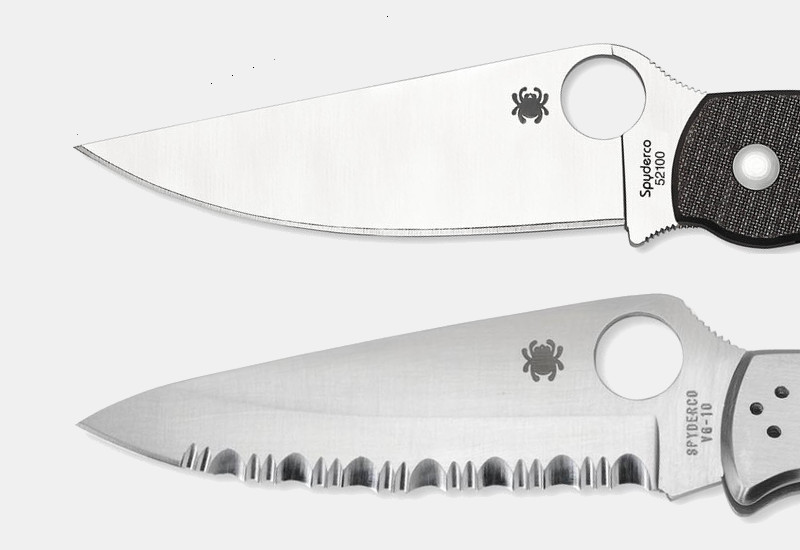
-
Materials
Think about the materials for both the blade and handle. Blades are made of either stainless steel or high carbon steel, with the former being the more popular option.
The advantage of stainless steel is its strength, durability and rust resistance. Carbon steel will rust faster in moist environments. On the flip side, carbon steel will keep its edge longer than stainless, so depending on your intended use, one should make more sense than the other.
Stainless steels like M390, S90V or Elmax all qualify as premium and can be quite expensive. A common cheaper alternative is S30V, an outstanding all-purpose steel. Further down the scale, but still on the higher end of things, are VG-10 and 154CM. Stainless steels like 14C28N, 440C or AUS-8 are more affordable but remain an excellent choice. Ultimately, knives with blades made of any of these steels should serve you well. I have experience with all, and they can hold their own.
On the high carbon steel side of things, my top recommendations would be either X90 or L6. X90 especially is tough as hell and stupidly easy to sharpen. Without proper maintenance, however, it will rust very quickly as it offers zero corrosion resistance.
For handle materials, my favorite is the ever popular and super tough G-10, an industrial fiber class composite. Zytel, which I do find a little grippier, is a close second. You can’t go wrong with either. Both will feel great when held. And for an everyday carry knife, that is key.
-
Features
When it comes to features, I like to keep things as simple as possible. An EDC knife is not a multi-tool and as such, should not come with a dozen different functions to serve your every need.
The three features that are in my mind worth considering are a sharp tipped blade, a pocket clip, and a glass breaking butt. I regularly run into tasks that require a sharp point, situations in which a tipped blade comes in very handy indeed. A pocket clip will ensure you can keep your EDC knife handy at any time, even if you need to abandon your gear bag. And I have found having a glass breaking butt useful on more than one occasion.
That said, none of these features are a necessity. Rest assured, however, that they can be great additions, and will not negatively impact the structure or life of your knife.
First on my list of features to avoid are rubber grips. I never really found them necessary to maintain a proper hold on any of my knives, and rubber will degrade very quickly.
I would also recommend staying clear of gimmicky additions like compasses. At first, they may seem like a good idea. However, they are often cheap, don’t work well or at all, and ultimately just make the knife less sturdy. If you need a compass, just get a compass.
-
Price
EDC knife prices start at about $25 and can run up to several hundred dollars. The higher a price you pay, typically the better the materials. Better materials translate to improved durability and reduced maintenance, like sharpening.
That said, lower priced knives can be amazing performers if they are well maintained. There are many great choices for under $50, and if you’re looking for your first EDC knife, you shouldn’t feel like you have to spend $200 to get anything decent. If however you can afford it, a more expensive product will serve you better in the long run. Feel free to take a look at my list of what I consider to be, based on my experience with them, the best EDC knives on the market.

